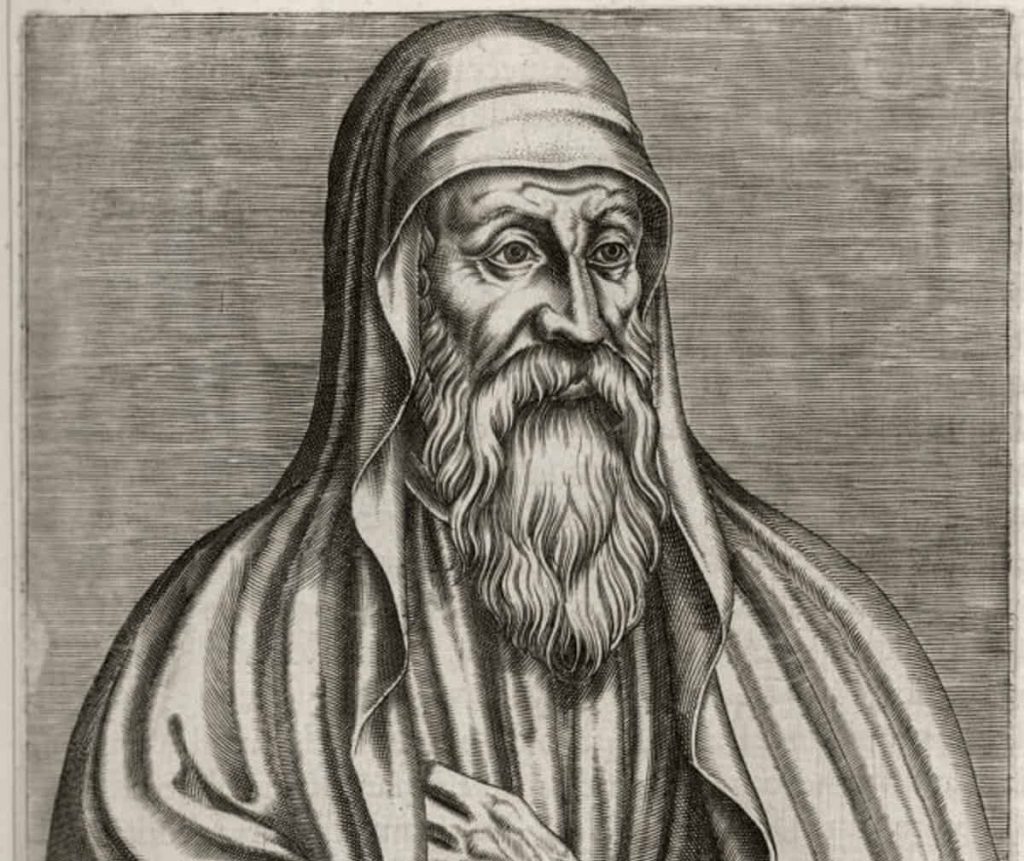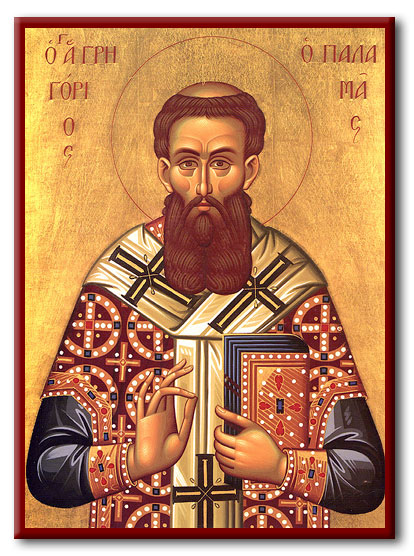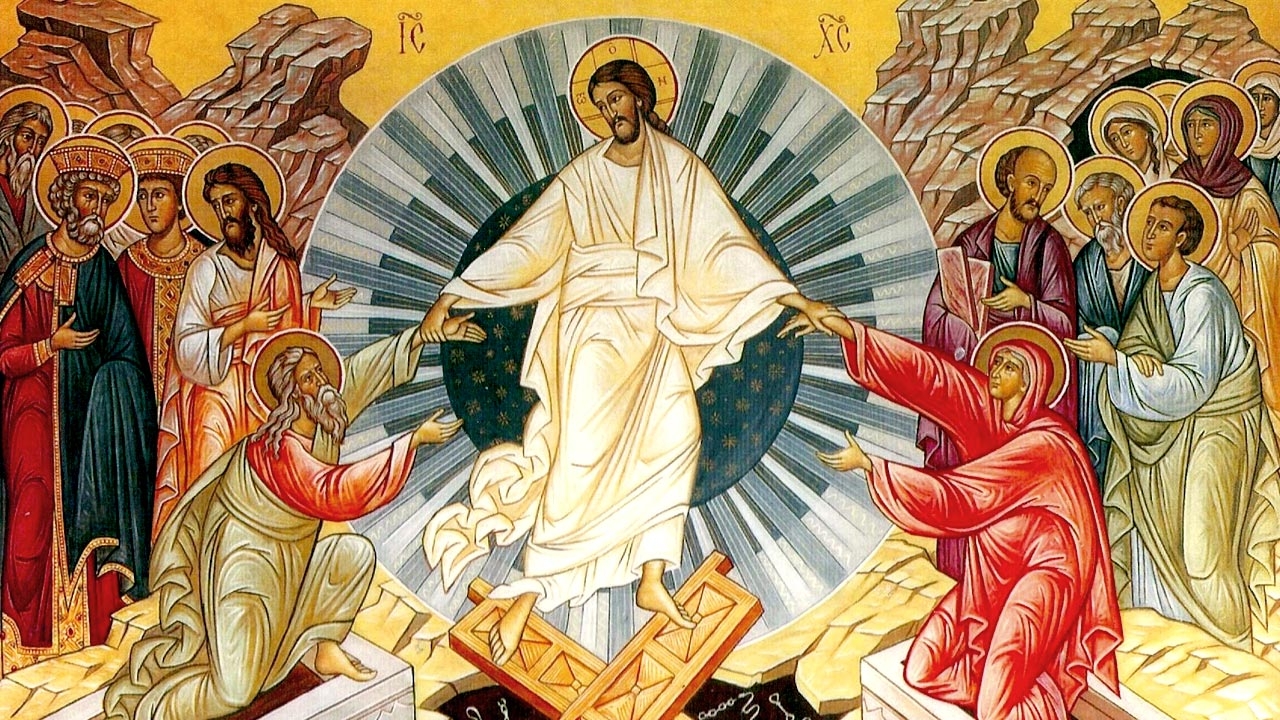Akron, OH. We think of Orthodox Christians as being like Catholics but with married priests and icons. However, more significant than these differences or the troublesome filioque clause, is a perspective that Christians in the West no longer clearly see. This is because we neglect an essential paradox upon which the Church Fathers framed Christian doctrine. A significant dilemma for the early Church was that communion with God’s immanence and oneness seemed contrary to Jewish worship of a transcendent God. The Orthodox theologian Vladimir Lossky, in his book, The Mystical Theology of the Eastern Church, notes that two sets of texts could be compiled from early Christian writings that apparently contradict each other: the first exhorting the inaccessible, absolutely transcendent character of God, and the second asserting that God can be known and attained in union. Orthodox Christians tend to be more otherworldly and mystical than Western Christians because they have retained an emphasis on union with God; finite, limited human persons can participate in the divine being through Christ, a process traditionally described as “deification.”
Patristic interest in God’s immanence was rooted both in the Christian experience and in the broader culture that was deeply influenced by Plato. The beauty of Plato’s writing—the analogy of the cave and the contemplation of the Good; the death-sentenced Socrates turning from the physical to better see the spiritual; and the ascent to God by threads of analogy—had captured the imagination of the ancient world. Most of the Church fathers thought in Platonic terms, and they used the ideas of Plato to more fully embrace God’s immanence. Platonic theory offered them a middle ground between Judaism’s worship of a personal but transcendent God and belief in a more impersonal union. Plato, like Eastern proponents of God’s immanence, thought of God primarily as the reality behind all things. This similarity included the way one communes with God through meditation and asceticism. However, unlike the Eastern sages, the ultimate Good for Plato was not identical with our own inner being. He saw the soul’s journey to Heaven as a homecoming that enables the fullness of each individual life. Among educated Christians reference to Plato was inevitable, and the first Christian to use Platonic ideas to formulate Christian doctrine was the Apostle Paul, who in his letter to the Colossians replaces the contemplation of Platonic Ideas with contemplation of the Jewish personal God:
Were you not raised to life with Christ? Then aspire to the realm above where Christ is seated at the right hand of God, and let your thoughts dwell on that higher realm, not on this earthly life.
The Platonic themes of contemplation, participation and “likeness to God so far as possible” also illuminated Christian beliefs such as the mystical union with Christ through Baptism and the Eucharist. However, at the very beginning Christian belief was understood by the disciples in a way that was consistent with their more immediate Jewish tradition. For the first followers of Christ, salvation generally meant the coming of God’s Kingdom on Earth. In Matthew’s gospel, Christ describes the tribulations that will precede his second coming and assures his disciples: “Truly I tell you; this generation will certainly not pass away until all these things have happened.” The resurrection of Christ seemed to prove Jesus as the promised Messiah, who would bring God’s rule to the world. But the delay of Parousia required a realignment of their beliefs, and we see in Paul’s second letter to the Corinthians that the new, charismatic resurrection-faith needed discipline and structure. Paul had to tone down his earlier enthusiasm and remind the Corinthians of the necessity for work and life in the existing order.
As uncertainty about an imminent second coming became more pronounced, another strand of Judaism that arose during Hellenist rule became increasingly relevant to the followers of Christ. Beginning with the Book of Daniel and including Sirach, Wisdom, and noncanonical texts, hope in the future is seen to reside more in Heaven than in the second coming of the Messiah. The Jewish texts influenced by the Greeks developed an understanding of Wisdom that was described through a pattern of descent and ascent. The Greek concept of Logos as the eternal principle through which everything is created is very similar to the description of Wisdom in the Book of Wisdom and in Sirach, and the Gospel of John relies on this understanding to describe Jesus as the Logos, who comes from the realm of light and goes back there again. The light of Christ descends into the darkness so that all people may become children of light. The image of the children of light, which has many earlier sources, is also expressed in Paul’s letters and in the gospel of Luke where it exists side-by-side with the messianic vision. John’s gospel, written later than the other gospels, does not mention the “Kingdom of God” and is far more concerned with salvation of the individual soul in Heaven. As in all immanent-centered religions, awareness of the hidden divinity is more important for John’s vision of Christianity than is hope for justice in the world. “It is the spirit who gives life,” says Jesus in John’s gospel, “while the flesh is of no avail.” The world is a stage where the children of light may come to know God, and salvation for John, as for Plato, means union with God in Heaven instead of the reign of God on Earth.
The increased emphasis on salvation in Heaven did not mean that the messianic faith in God’s Kingdom on Earth had been replaced. Both traditions were inherent in the texts of the time. The joy and values of the Kingdom could be known in the present but were to be more fully realized after death. Christians “tasted the goodness of the word of God and the powers of the coming age” through the indwelling Christ and the Spirit. In the synoptic gospels, the “Kingdom of God” expressed an imminent expectation, but it was a complex expression that also meant the existent but hidden lordship of God that “is not coming with signs to be observed… for behold, the Kingdom of God is in the midst of you.” The dual importance of both Heaven and Earth in early Christian thought was reflected in the desire to give effect to the Lord’s Prayer, “thy will be done on Earth as it is in Heaven.”

Nevertheless, the messianic, earth-bound faith committed to the worship of a personal God was not easy to reconcile with the idea of union with God in Heaven. The more heavenly-oriented early theologians were especially susceptible to the Platonic belief, adopted by the Gnostics, that all humans are preexistent divine beings. Origen, who was the most acclaimed Christian theologian during the first half of the third century, also accepted the preexistence of souls, and he was only regarded as unorthodox decades after his death. Origen believed God created all beings in perfect harmony with their creator, but, through their own fault, all except for one fell away from God. Those who fell closest to God were the angels, humans fell the middle distance and demons were the furthest. One exceptional being clung in loving devotion to God in a state of constant contemplation and became Jesus, who was at one with the Word of God.
Origen’s belief in the preexistence of souls conflicted with Christianity’s more earthly Jewish roots because Christianity had accepted the Jewish principle that creation is distinct from God. This distinction was essential to maintain because justice, history, and personal relationships have little meaning if salvation is unrelated to earthly events. But a messianic, earth-bound understanding made it more difficult to conceptualize the soul’s journey to Heaven than it was for Gnostics, whose Platonic theory convinced them the self-aware divine soul would naturally return to Heaven. Pagans and many Christians did not think that a finite being could participate in the boundlessness of the divine. However, a contemporary of the disciples, the Jewish philosopher Philo, paved the way for Christians to accept a Platonic understanding of the soul’s ascent to God. Philo believed that the spiritually aware person must first despair over the distance from God. Then, from a position of humility, it becomes possible to perceive a spiritual capacity, which is not due to our divine nature but comes from God, who “stamped on the invisible soul the impression of Itself.” Because the burnished soul can reflect the divine image, one can contemplate God by contemplating the divine image present in oneself. “It is only by becoming Godlike that we can know God,” Philo reasoned. The apostle Paul demonstrates his understanding of the nuances of Neoplatonic theory when he writes in his second letter to the Corinthians: “But we all, with unveiled face, beholding as in a mirror the glory of the Lord, are being transformed into the same image from glory to glory.”
The spiritual ascent of each Christian was thought to be facilitated by the incarnate God, who raises believers with the light of true reality and Christ’s example. Hence, the declaration by notable Church Fathers, like Irenaeus, that “God became man that man might become God.” The early Christian theologians admitted hope for divinization by God’s grace through Platonic virtue and purification, and they were unwilling to forsake Plato’s hope of a heavenly homecoming. However, this use of Platonic theory took place without surrendering the importance of a relationship with a distinct and utterly transcendent God. Platonic philosophy was seen as advancing the Jewish relationship with God. Thus, St. Jerome (347-420), who translated the Latin Vulgate Bible from Hebrew and Greek, famously said, “Plato located the soul of man in the head; Christ located it in the heart.” The sentiments usually associated with the heart, such as love and adoration, had primacy in Christianity’s Jewish tradition, but the Platonic ideal of the unattached virtuous mind was seen as facilitating the desirous heart (of Judaism) to commune with God.
This blending of the earthly and the spiritual was challenged by the Gnostics and by classical thought in general, which drew a sharp distinction between the changing temporal world driven by passions and the more perfect, unchanging eternal life of the highest truth. The Church fathers, shored up by their Jewish heritage, insisted that what happens in this world is of great importance. Christianity had to defend its commitment to worldly experience from the Gnostics, who sought to escape the confines of the flesh. However, the Gnostic heresy had to be confronted while at the same time integrating God’s immanence and union through Christ. The effort to reconcile these competing understandings culminated in the works of Augustine, who recognized that Platonic ideals must be tempered with the traditional Jewish sense of repentance and complete dependence on God. The classical ideals of perfection in this life and concentrated tranquility were thought by Augustine to be deeply flawed:
Whoever thinks that in this mortal life a man may so disperse the mists of bodily and carnal imaginings as to possess the unclouded light of changeless truth, and to cleave to it with the unswerving constancy of a spirit wholly estranged from the common ways of life – he understands neither What he seeks, nor who he is who seeks it.
Though bound by a Jewish based understanding of humans as finite beings, Augustine and the early Church maintained a Platonic optimism that we are defined by a capacity for faith, for hope, and for longing because all of us are wanderers seeking a country that is always distant and always present. We are limited beings distinct from God, but our earthly nature becomes beautified when it participates in the infinite. Christ’s humanity was thought to make it possible for every person to share in the divine life without ceasing to be human. Before Christianity, religion tended to evolve through a focus on either God’s transcendence or immanence, with earthly life thought of as either creaturely or illusory. Christianity revived and refined far older religious beliefs by insisting on the existence of mixed beings, not the same as God nor completely finite. There was a recognition that we are creaturely but with the potential to become Christ-like: “That they may be one, even as we are one.” However, the starting point for theory was always Christian experience and the Cross. In Christ’s passion his suffering and surrender mysteriously incorporate the worldly with the spiritual. In Baptism and Eucharist there is union in Christ and relationship between distinct beings.
The Church’s Platonic tradition that incorporated God’s immanence remained strong through the Middle Ages despite the doctrinal reforms by the scholastics. The great saints of that era were unrelenting in their striving for union, and their efforts reached an apogee in the works of John of the Cross who, like all the sages of immanence, advocated detachment and oneness. John of the Cross himself led an active and charitable life, but the Platonic tendencies of the Church in the early Middle Ages had become overly pronounced and the result was a Christianity too disassociated from earthly struggles. Aquinas was rightly concerned, and he worked to replace Plato with the more earthly-oriented Aristotle as Christianity’s foundational philosopher. Unlike Orthodox theology, Western theology in the Middle Ages became more analytical and more interested in trying to glean God’s will from the natural order. In hindsight, this may not even be possible because evolution favors selfishness at least as much as cooperation and charity. Aristotelian theology slowly became separated from spirituality, but the new intellectual rigor did not immediately change religious culture. Aquinas was contemplative and well aware of Plato’s importance to the Church Fathers. In Platonic fashion, he wrote that God’s grace deifies humans by “bestowing a partaking of the Divine Nature by a participated likeness.”
Medieval theologians steeped in the tradition of Plato and Augustine had accepted a subsidiary role for knowledge gleaned from the senses. But true knowledge, they believed, requires illumination and a participation in the kind of knowledge God has of the Platonic Forms. The contingent things of this world were thought inadequate to explain unchanging divine wisdom. Aquinas, on the other hand, saw that Aristotle had revealed logical inconsistencies with the Forms. By raising up Aristotle over Plato as “the Philosopher,” Aquinas began a theological tradition distinct from the artistic and metaphorical qualities of Platonic thought that had allowed the Church Fathers to incorporate a fuller understanding of what it means to be in communion with God. Aquinas’ appeal to reason and his love of Aristotle may have helped bring about the Renaissance and modern science, but the balance that was formulated by the early Church and the hope for deification were diminished.

Less than a century after Aquinas wrote his Summa Theologica, Orthodox Christianity was forced to confront the new Western theology. Orthodox Christianity’s great theologian Gregory Palamas refused to accommodate Aristotelian philosophy and instead buttressed the Jewish/Platonic synthesis of the Church Fathers. The philosophical conundrum he faced was that an utterly transcendent God was thought to be too awesome and unapproachable for union. Palamas, building on the writings of Maximus the Confessor (586-662), distinguished between the essence of God, which is always beyond the reach of humans, and the uncreated energies of God. The divine energies are like the light of the sun, which we can experience without being in direct contact with the fiery orb. By uniting with the divine energies, Palamas argued, it is possible to participate in God’s grace and become like gods without becoming identical to God. In a short book about deification, the Orthodox abbot George Kapsanis explains that rationalists in the West cannot speak about deification because they “do not discern between the essence and the energy of God.” The abbot believes that God is present in nature and preserves the universe through the divine energy, which is the grace of the Holy Spirit that leads to union. Union and deification happen “slowly-slowly within the Church, with the Grace of God, with humility, repentance, prayer, and the holy Mysteries.” Western theologians argue that there cannot be a real distinction between essence and energy, but this distinction builds a bridge back to the Platonic tradition of the early Church and to the Christian promise that limited creatures “may become partakers of the divine nature.”



4 comments
Willis Renuart
Long after his life when orthodoxy was more settled, Origen was deemed a Subordinationist for believing the Son proceeded from the Father. See Tom Gregg’s excellent book, Barth, Origen, and Universal Salvation.
Jesse
Really enjoyed this. Thank you. Your summary of Origin would be contested by some scholars, particularly when you have Origin saying that Jesus Christ was the most faithful creature. Your summary better represents the thought of several of Origin’s much later students who ran with some of his most speculative thinking. John Behr is one current scholar who would defend Origen (in his translation Origen: On First Principles, Oxford Early Christian Texts for example).
On another topic, for those interested in engagement between Palamas and Western theology, here is a scholar doing great work.
https://youtu.be/cfTz7vBCYfY
Willis Renuart
Thanks for reminding me that the concept of deification is accepted in the Latin rite Mass: “By the mystery of this water and wine may we come to share in the divinity of Christ…” Deification does indeed have deep roots in Christianity. I agree with the conclusion of your essay: “Hopefully, we can finally let go of the idea that deification belongs only to the east.”
Jared Ortiz
For a different narrative of the West, please see the article below and the links therein: https://publicorthodoxy.org/2019/08/06/catholics-always-taught-deification/
Comments are closed.